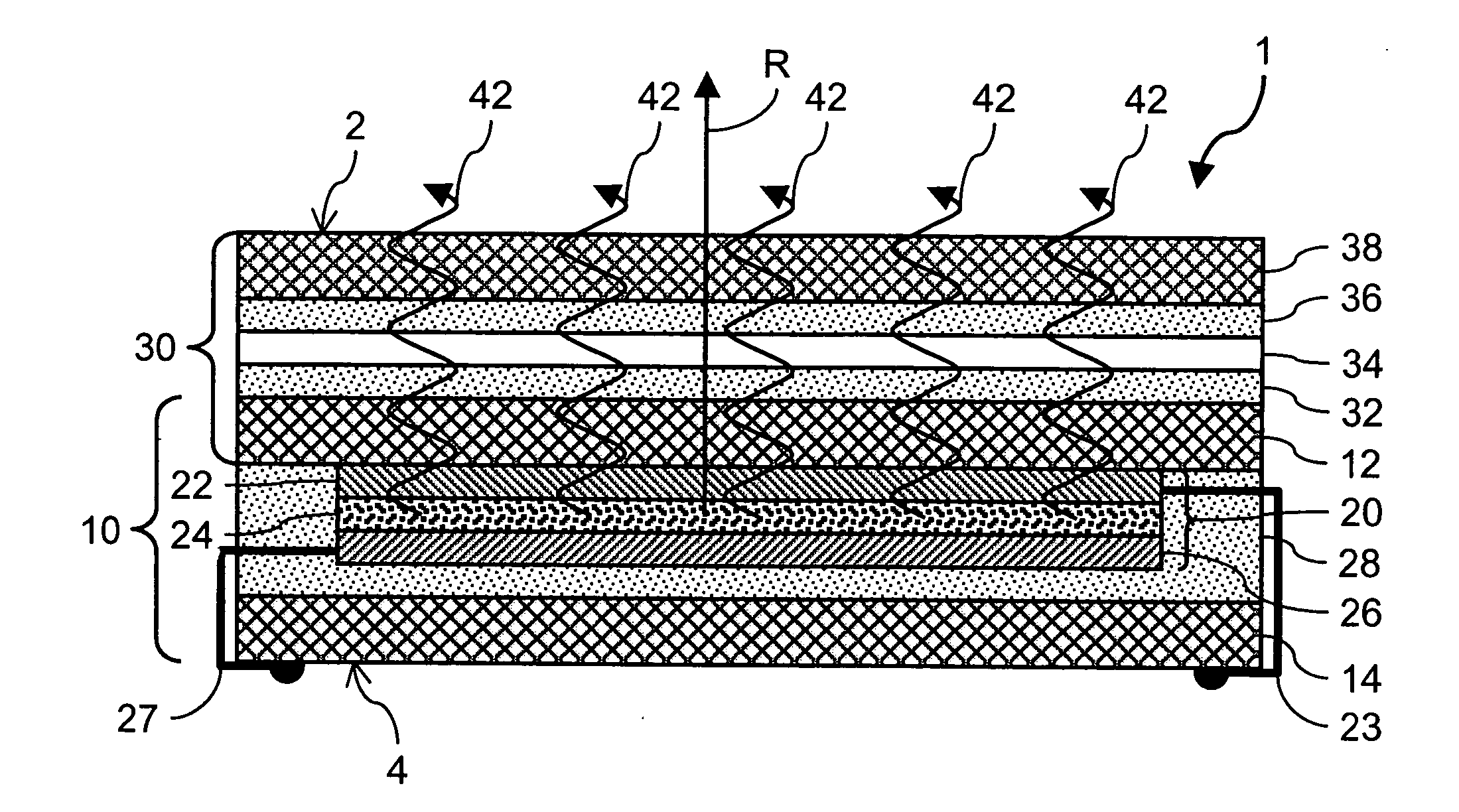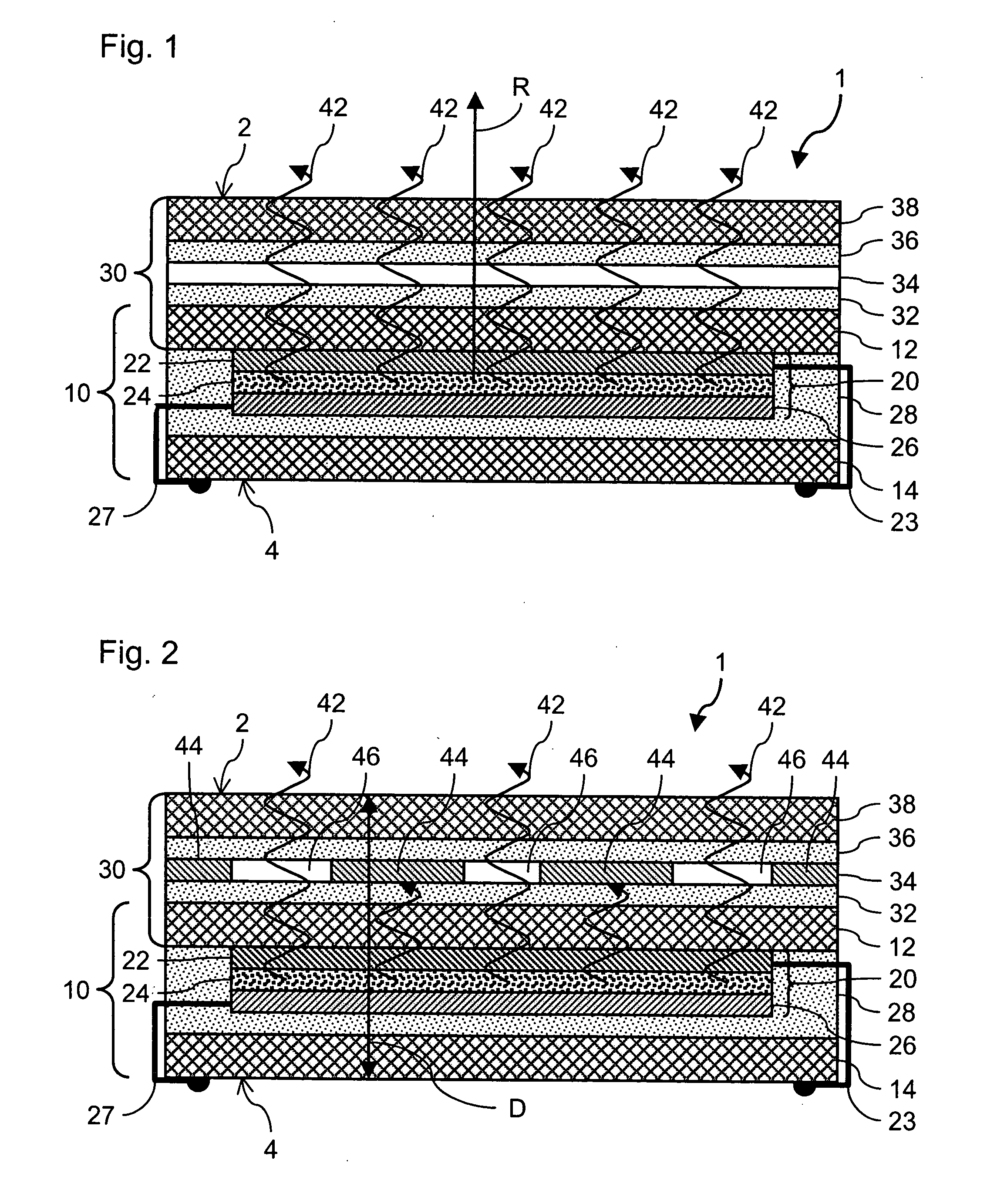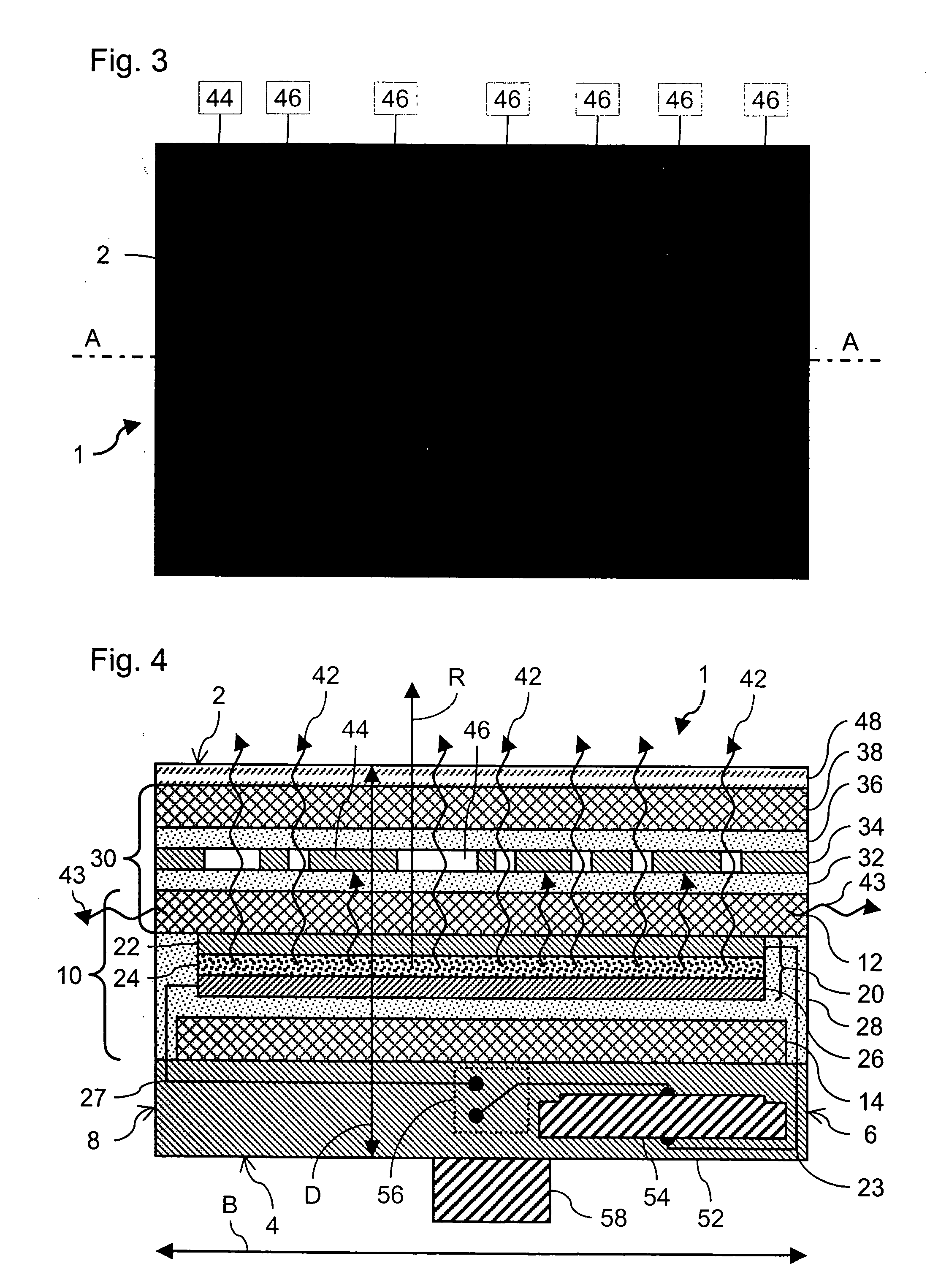Organic light emitting device
a light-emitting device and organic technology, applied in the direction of discharge tube luminescnet screens, electric discharge lamps, electrical equipment, etc., can solve the problems of fracture sensitivity of oleds, thereby exacerbated difficulty, and the subject of intensive development work of oleds, and achieve small structural height and sufficient stability.
- Summary
- Abstract
- Description
- Claims
- Application Information
AI Technical Summary
Benefits of technology
Problems solved by technology
Method used
Image
Examples
Embodiment Construction
[0057]FIG. 1 shows an unpatterned organic light emitting device 1. The device 1 comprises a light emitting composite element 10 with a transparent base substrate 12 made of glass, onto which an organic light emitting layer arrangement 20 is applied or deposited, and with a covering substrate 14. The light emitting layer arrangement 20 in turn comprises a light emitting layer having electroluminescent material 24, e.g. an electroluminescent polymer, which is arranged between a transparent conductive ITO anode 22 and a metal cathode 26 and is contact-connected by them.
[0058] The light emitting layer arrangement 20 is potted with adhesive 28 on the rear side, the covering substrate 14 simultaneously being adhesively bonded on by means of the epoxy adhesive 28. A hermetic encapsulation of the light emitting layer arrangement 20 is thereby obtained.
[0059] The light generated in the device 1, represented by the arrows 42, is coupled out upwardly in the illustration, that is to say in th...
PUM
 Login to View More
Login to View More Abstract
Description
Claims
Application Information
 Login to View More
Login to View More - R&D
- Intellectual Property
- Life Sciences
- Materials
- Tech Scout
- Unparalleled Data Quality
- Higher Quality Content
- 60% Fewer Hallucinations
Browse by: Latest US Patents, China's latest patents, Technical Efficacy Thesaurus, Application Domain, Technology Topic, Popular Technical Reports.
© 2025 PatSnap. All rights reserved.Legal|Privacy policy|Modern Slavery Act Transparency Statement|Sitemap|About US| Contact US: help@patsnap.com



